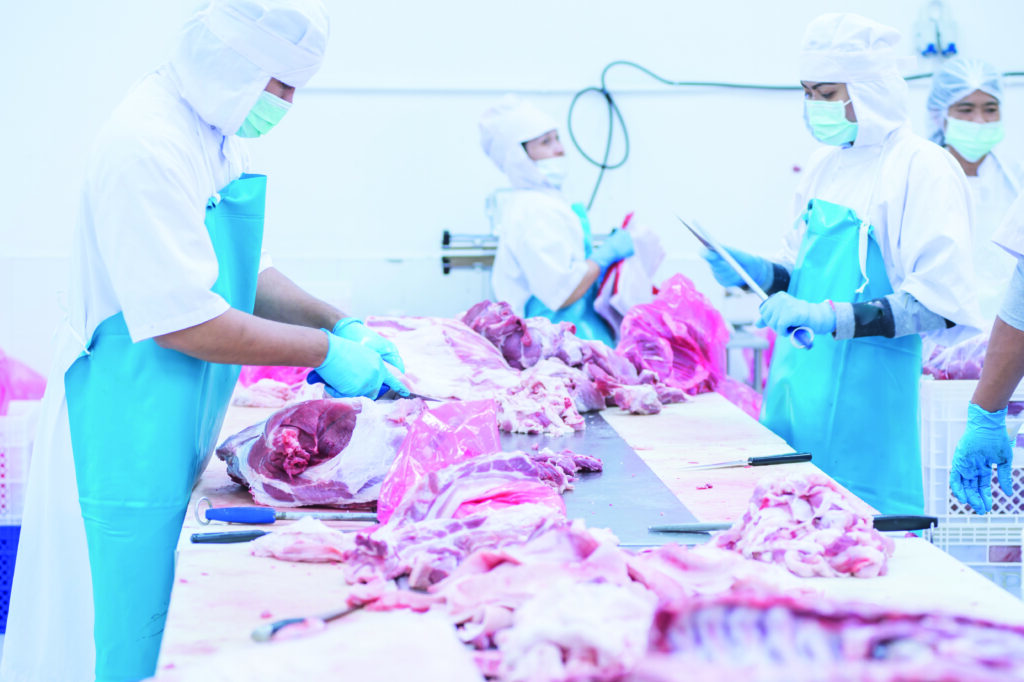With Brexit negotiations stalling badly – a divided Cabinet at home and little common ground between the UK and EU positions – Prime Minister Theresa May headed to Florence last month to deliver a speech intended to break the deadlock. While still lacking in long-term detail, it appears to have gone some way to getting things moving again.
Transition period
In a distinct change of tone, the big headline was Mrs May’s firm proposal for a transition period of about two years that would more or less retain the status quo in terms of trade, labour supply and regulation until 2021. The UK would be required, in return, to continue paying into EU coffers and accept free movement of people and the jurisdiction of the EU Court of Justice.
The deal would need to be agreed by the remaining EU-27 and the reaction from Brussels was mixed, as summed up by Michel Barnier, the EU’s chief negotiator – a ‘step forward’ but more ‘concrete implications’ required. But the framework is now there for a transition period that would bring clarity and breathing space on certain key issues.
AHDB Pork strategy director Mick Sloyan said a transition period ‘makes absolute sense’ and would be a good thing for business generally, but especially farming. “Once you have made the decision about what you want to do, giving people enough time to adjust is equally important,” he said.
EU labour
The proposed transition period would see continued freedom of movement between the EU and the UK until 2021, although all new EU arrivals would need to be registered after March 2019. And in a new concession, Mrs May offered to introduce new stronger legal protections for EU citizens living in the EU.
While this would, if agreed, bring relief to an industry heavily reliant on EU labour, the longer-term picture is far less clear, particularly in the wake of a Home Office document leaked to the media in early September, setting out a hard-line approach to immigration. This included plans to curb so-called ‘low-skilled’ workers from the EU by, for example, introducing a cap on numbers and salary and skills thresholds, as well as ending the right to settle in Britain for most European migrants and tougher controls and checks at points of entry.
Mrs May’s speech was more conciliatory in tone but the longer-term concern for the industry remains in this desire to clamp down on the sort of workers it relies heavily upon. While the Home Office document indicates a willingness to show flexibility for sectors where shortages could occur, most of the proposed solutions for agriculture so far have focused on seasonal schemes, which would be of little use to the pig sector.
The Government has commissioned the Migration Advisory Committee (MAC) to advise it on how the UK’s immigration system ‘should be aligned with a modern industrial strategy’. It is now seeking views from across the UK economy to help it shape future policy.
To inform its response, the National Pig Association (NPA) is asking members to fill in a short, anonymous online survey, which can be accessed at www.npa-uk.org.uk/
NPA senior policy advisor Ed Barker said the association was ‘alarmed’ by the suggestion in the Home Office document that EU labour should be severely restricted, particularly those in the misleading ‘low-skilled’ (defined as not educated to degree level) category.
“Many workers in the pig sector fall into this category but are in fact highly skilled and make a significant contribution to the economy,” he said. “We need to present as robust a case as possible to the MAC, highlighting our needs when it comes to EU labour. That is why it is important as many members as possible fill in our survey.”
EU trade
Mrs May wants UK trade with the EU to ‘continue on current terms’ for the ‘strictly time-limited’ transition period, with current EU rules remaining in place, in order to help ensure a smooth and orderly transition.
Beyond that, the Prime Minister ruled out a longer-term Norway or Switzerland-style relationship with the EU, where little would change, or a free trade deal like the one the EU has struck with Canada, offering greater freedom but restricted market access.
She wants something in between that would retain frictionless trade, including no new tariffs. There would need to be common rules and regulations – Mrs May spoke of ‘protecting and strengthening’ our ‘high regulatory standards’ – but the UK also wants some regulatory and trade freedom, a difficult balance to negotiate.
For the pig sector, where the market is heavily driven by global trade, continued tariff-free trade during the transition, and possibly beyond, would bring stability and relief for exporters. Just don’t expect too much freedom from the grip of Brussels red tape.
Non-EU trade
Mrs May offered little new on the UK’s plans for post-Brexit trade beyond the EU. But addressing the NPA producer group in September, Defra officials highlighted the intention to initially replicate the EU’s current tariff arrangements with other countries for a period after we leave, at least, to ‘preserve continuity as far as possible’.
The UK will need to renegotiate the 40 Free Trade Agreements (FTAs) that the EU currently has with third countries and wants to replicate the EU schedules as much as possible. This could include the EU-Japan deal currently being negotiated, an issue of potentially major significance for the UK pig sector as it includes tariff-free access for pork.
Mr Sloyan pointed out, however, that most third country pork export deals the UK has in place are not part of FTAs but are bilateral agreements where it has been agreed to use EU rules. The officials confirmed the intention would be to roll forward existing provisions.
Import threat
The flip side for the pig sector to potential post-Brexit trade deals with, for example, the US and Canada is the risk of cheaper, lower standard imports coming the other way.
Asked during a recent evidence session in front of MPs how he could ‘prevent a compromise on standards’ in trade deals with the likes of the US, Defra Secretary Michael Gove insisted the Government would stand by the farming industry.
Even if the question of allowing in chlorine-washed chicken was all that held up a deal with the US, the Government would not budge, Mr Gove insisted.
“One thing that the Cabinet has agreed – and we have discussed it – is that we cannot compromise our high environmental or animal welfare standards in pursuit of a trade deal,” he said. “If we were to undermine the high reputation that British agriculture has earned by seeming to compromise on those standards, we would be tarnishing the brand.”
The proof of this particular pudding, as everyone in the industry knows, will be in the eating, however.
Post-Brexit trade prospects
AHDB’s latest Horizon report outlined the future global trade prospects for British meat in the context of Brexit. It cited figures suggesting that global consumption of pig meat is set to rise by 11 million tonnes over the next 10 years, with Asia accounting for the majority of this projected growth.In terms of current trade, the
report showed:
* Non-EU pig meat (including offal) shipments reached nearly 140,000t last year (compared with just over 100,000t in 2015), worth £154m and representing 32% of total UK pig meat product exports
* Exports to Greater China, including Hong Kong, increased by approximately 13,000 tonnes
* By share, the UK’s major non-EU pork exports (excluding offal) are: China (67%, the US (11%), the Philippines (4%), Ivory Coast (3%) and South Korea (2%).Looking forward, the report noted that pig meat export prospects will continue to be significant in South East and East Asian economies for lower value cuts and offal, particularly in light of the recent deal to secure access to China for trotters from three UK abattoirs. Trotters were retailing at £1.43/kg in China in June, the report noted. West Africa and South Africa also offer opportunities for this sort of product, while Taiwan and South Korea could offer demand for commodity product. Premium opportunities look to be more limited to North America and Australia and New Zealand, with small potential for high quality food service in China and Japan.
The report ranked the potential for commodity and premium exports:
Commodity product
Very high potential: China
High: Hong Kong, Ivory Coast, other West Africa, Philippines, Singapore, South Africa, South Korea, Taiwan
Medium: Canada, Caribbean, India, Japan, Mexico, Russia, Thailand, VietnamPremium product
High: Hong Kong, USA
Medium: Australasia, Canada, China, India, Japan, Singapore, South Korea, Taiwan





